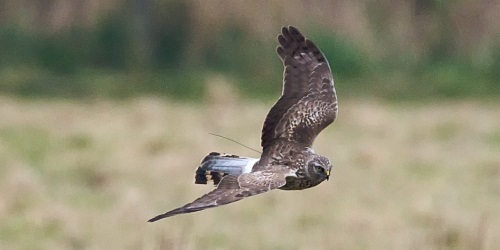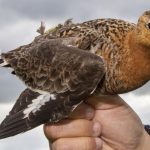← Back
Argos helps reveal that British grouse moors are dangerous grounds for hen harriers

Hen Harriers is a protected species of raptor living in Great Britain. Until recently, their behaviour and habits had been observed mostly at specific times and areas. Argos PTTs have enabled monitoring a wide variety of individuals over long periods and studying threats from recreational shooting.
The historic ornithological literature in the United Kingdom refers to the Hen harriers (Circus cyaneus) as a partial migrant that breeds in the uplands, then descends to the coasts and lowland outside of the breeding season.
Satellite telemetry to collect long, wide-range tracking
Sixty hen harriers were satellite-tracked by Natural England. Use of Argos PTTs enabled to learn a great deal about the hen harrier’s complex dispersal strategy. This ranges from sedentary birds (usually females) with a life home range of approximately 5×5 km compared with other birds (usually males) that winter up to 1500 km away from the natal area in central Spain. The tracking data thus made it possible to question the previously assumed hypothesis and to prove that this was a misleading assumption from observer bias – it is the birdwatchers that go to the coast in the winter, hence this is where the vast majority of records originated! There are harriers that winter in coastal areas (possibly bolstered by Fenno-Scandia birds) but there are also many birds that stay in the uplands for their entire lives.
More info about birds tracking
Disappearances on grouse moors
One of the questions concerning hen harriers was also to determine whether the last known transmission locations correlates to land used for game shooting (a.k.a. “grouse moors”). Indeed, hen harriers predate among other species on red grouse, which are also prey for recreational shooting. Argos tracking enabled to test the hypothesis that the patterns of deaths and disappearance of hen harriers are associated with land managed for grouse shooting. Analysis of the data showed that mortality and unexpected tag failure occur at a higher rate on grouse moors, which could lead to the conclusion of illegal killing there.
Information relating to habitat use should make a significant difference to hen harrier conservation in the United Kingdom. Continuing satellite tracking hen harriers in the upcoming years and deploying more Argos-enabled PTTs should help.
Reference:
Megan Murgatroyd, Stephen M. Redpath, Stephen G. Murphy, David J. T. Douglas, Richard Saunders & Arjun Amar , Patterns of satellite tagged hen harrier disappearances suggest widespread illegal killing on British grouse moors, Nature Communications, 10, 1094 (2019), https://doi.org/10.1038/s41467-019-09044-w
Photo: Juvenile male Hen Harrier with an Argos PTT (Credits Les Steele)



